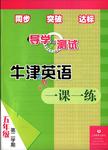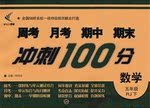|
阅读理解
The CBS-TV “National Drivers' Test” shows that many UK drivers have a lot to learn.Here are some reasons.
CBS picked 1799 sample drivers to take the test in TV studios in Nottingham, Birmingham and Liverpool.More than two out of five drivers failed the test.And the average score was the lowest passing grades-51 points out of a possible 80.
Liverpool drivers did the best with an average of 53 points.Nottingham drivers came next with 2 points lower and Birmingham drivers got 50 points-a failing score.Drivers with 50 or less rated “poorly informed” by the judges.
Here are some of the test results:
(1)Are men drivers better informed than women ones?
Yes.Men averaged 52 points while women got an average of 49.
(2)Are older drivers better informed than younger ones?
No.Drivers under 26 averaged 52 points.Dri-vers from 27~45 averaged 51, drivers over 45 failed with a 48 points average.
(3)Does education make a difference?
Yes.College graduates averaged 52 points.High school graduates averaged 50.Those without full high school education got 48.And people who got driver education courses scored an average of 53 points-three more than those who hadn't.
(4)Does driving experience make a difference?
Yes.Drivers with three or more year of experience averaged 51 points.Drivers with less experience averaged 49.
Some surprising facts about the test are also listed:
(1)More than one out of three drivers didn't know that a blinking red light means a full stop.
(2)Three out of ten drivers didn't know that an eight-sided sign means stop.
(3)More than two out of three drivers didn't know what to do when being tailgated(追尾)The answers are very simple:slow down, drive to the left, and let the drivers behind pass.
The test results have been turned to the National Safety Council and they will help future safety planning.
| 
 导学与测试系列答案
导学与测试系列答案 新非凡教辅冲刺100分系列答案
新非凡教辅冲刺100分系列答案